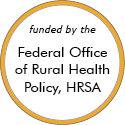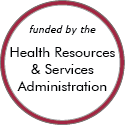Rural Project Examples: Illicit drug use
Evidence-Based Examples
keepin' it REAL Rural
Updated/reviewed March 2024
- Need: A drug and alcohol prevention program for middle school students that is specific to rural culture.
- Intervention: An adaptation of the evidence-based keepin' it REAL curriculum was customized for rural middle school students.
- Results: Students showed a reduction in all substance use and less personal acceptability of substance use.
Effective Examples
Vermont Hub-and-Spoke Model of Care for Opioid Use Disorder
Updated/reviewed August 2020
- Need: Increase access to medication-assisted treatment for opioid use disorder in rural Vermont.
- Intervention: Statewide hub-and-spoke treatment access system.
- Results: Increased treatment capacity and care coordination.
Other Project Examples
Arukah Institute's Living Room Program


Added December 2023
- Need: To address high rates of substance use in Princeton, Illinois and the surrounding area.
- Intervention: The Arukah Institute, a local nonprofit organization providing mental health services, adapted a statewide model to provide support and a safe space for people in need of substance use resources.
- Results: The Living Room program had 1,485 visits in its first year, with 100% of clients served by recovery support specialists.
New Horizons Substance Use Recovery Network

Updated/reviewed August 2021
- Need: In northern Michigan, a need for an integrated approach to deliver medication-assisted treatment for established patients of Federally Qualified Health Centers with opioid use disorder.
- Intervention: Collaboration between one FQHC across 3 sites, a local waivered prescriber group, and a behavioral health organization created an integrated treatment approach for opioid use disorder.
- Results: Increased access to medication-assisted treatment and comprehensive substance use disorder services leading to increased retention in treatment and increased engagement in stable recovery from opioid and alcohol use disorders.
For examples from other sources, see:
